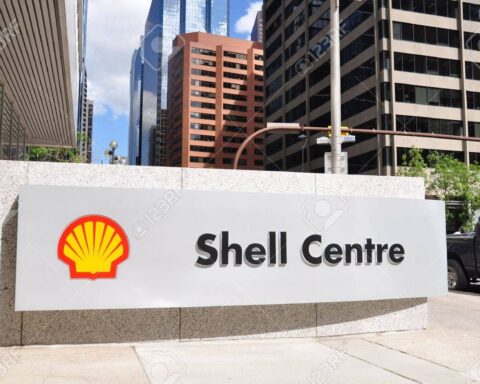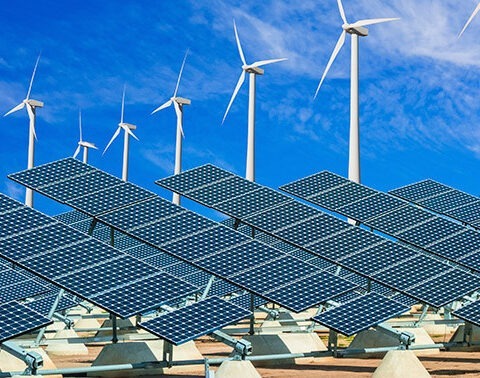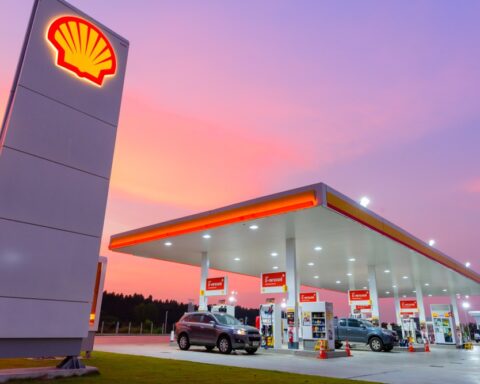Europe’s largest PEM hydrogen electrolyser*, today began operations at Shell’s Energy and Chemicals Park Rheinland, producing green hydrogen.
As part of the Refhyne European consortium and with European Commission funding through the Fuel Cells and Hydrogen Joint Undertaking (FCH JU), the fully operational plant is the first to use this technology at such a large scale in a refinery.
Plans are under way to expand capacity of the electrolyser from 10 megawatts to 100 megawatts at the Rheinland site, near Cologne, where Shell also intends to produce sustainable aviation fuel (SAF) using renewable power and biomass in the future. A plant for liquefied renewable natural gas (bio-LNG) is also in development.
“This project demonstrates a new kind of energy future and a model of lower-carbon energy production that can be replicated worldwide,” Shell’s Downstream Director, Huibert Vigeveno, said at today’s official opening ceremony.
“Shell wants to become a leading supplier of green hydrogen for industrial and transport customers in Germany,” he added. “We will be involved in the whole process — from power generation, using offshore wind, to hydrogen production and distribution across sectors. We want to be the partner of choice for our customers as we help them decarbonise.”
Shell has a target to become a net-zero-emissions energy business by 2050, in step with society. As part of its Powering Progress strategy, Shell plans to transform its refinery footprint to five core energy and chemicals parks. This means Shell will reduce the production of traditional fuels by 55% by 2030.
The Rheinland electrolyser will use renewable electricity to produce up to 1,300 tonnes of green hydrogen a year. This will initially be used to produce fuels with lower carbon intensity. The green hydrogen will also be used to help decarbonise other industries.
The European consortium backing the project consists of Shell, ITM Power, research organisation SINTEF, consultants Sphera and Element Energy. The electrolyser was manufactured by ITM power in Sheffield, UK, and includes parts made in Italy, Sweden, Spain and Germany.
Armin Laschet, North Rhine-Westphalia’s Minister-President, said: “We are a hydrogen region. With the commissioning of the largest PEM electrolysis plant in Europe, we are further expanding our leading role in this field. We are therefore laying the foundation for a modern and green industry, with highly skilled jobs. Today, 30% of German demand for hydrogen already comes from North Rhine-Westphalia’s industry. Estimates predict that demand will double by 2030. This is why we need innovative solutions that will meet the demand for CO₂-neutral hydrogen. Projects such as Refhyne demonstrate how innovation can benefit both the environment and the economy.”
Bart Biebuyck, Executive Director of FCH JU, said: “In order to achieve climate neutrality by 2050, we need to fundamentally reshape our energy system. Clean hydrogen will play a key role in e-mobility and in industry, as it has great potential for decarbonising sectors where direct use of renewable energy is not possible. Accordingly, we want to accelerate the market launch of fuel cells and hydrogen technology and tap into their advantages in Europe.”
Supporting quotes:
Dr Graham Cooley, CEO of ITM Power, said: “We’d like to congratulate our partners on the successful start-up of Europe’s largest green hydrogen production plant. We all recognise that this is just the beginning of the journey to net zero. The next step, Refhyne II, is even bigger and would take us into the hundreds of megawatts for the first time, on our way to gigawatts deployments. The vision and commitment of Shell, North Rhine-Westphalia and the FCH JU show what can be achieved to deliver the world’s commitments on climate change.”
Alexandra Bech Gjørv, president and CEO of SINTEF said: “This is a big step towards a carbon-free future. SINTEF has been heavily involved in European electrolysis research for more than a decade, from fundamental development of materials and components to pilot projects. We are happy to see large-scale implementation as here in Refhyne. The green transition was something we talked about, now it is what we do. The transformation to the low-emission society is happening now and it is scaling up.”
Enquiries:
Media Relations
International: +44 207 934 5550
Germany: +49 40 6324 5290
Notes to editors:
- The Refhyne project is at the forefront of the effort to produce green hydrogen in Europe. Hydrogen will play a key role in the European Green Deal’s climate targets by helping to decarbonise harder-to-abate sectors such as transport and industry. The European Commission released a landmark Hydrogen Strategy in 2020.
- Shell is also planning to produce sustainable and synthetic aviation fuel using renewable power and biogenic sources. The 100 MW electrolyser (Refhyne II) and SAF projects are at an advanced planning stage, with final investment decisions still pending. The consortium for Refhyne II has been invited to prepare the associated grant agreement with CINEA¹.
- Shell’s energy and chemicals parks will be highly integrated with chemicals sites to make them even more efficient in producing low-carbon and synthetic fuels, as well as high-value products such as bitumen, lubricants and chemicals.
- Shell Germany announced plans last year to reduce or compensate carbon emissions by more than a third within a decade – this includes its own emissions and its customers’ greenhouse gas emissions when they use the products it sells. This corresponds to 30 million tonnes per year, or about a tenth of the government’s CO₂ reduction target for Germany by 2030.
- *Polymer electrolyte membrane (PEM) electrolysers are more compact than a conventional alkaline electrolyser. They are suited to working with renewable energy sources because they can operate dynamically using varying loads of electricity. This allows PEM electrolysers to operate when wind and solar energy generation are cheapest.
- High-resolution pictures can be downloaded here.
¹ The invitation to the grant agreement preparation should not be regarded under any circumstances as a formal commitment by CINEA to provide financial support, as this depends on the satisfactory and timely conclusion of grant agreement preparation.
Cautionary note
The companies in which Royal Dutch Shell plc directly and indirectly owns investments are separate legal entities. In this announcement “Shell”, “Shell Group” and “Group” are sometimes used for convenience where references are made to Royal Dutch Shell plc and its subsidiaries in general. Likewise, the words “we”, “us” and “our” are also used to refer to Royal Dutch Shell plc and its subsidiaries in general or to those who work for them. These terms are also used where no useful purpose is served by identifying the particular entity or entities.
‘‘Subsidiaries’’, “Shell subsidiaries” and “Shell companies” as used in this announcement refer to entities over which Royal Dutch Shell plc either directly or indirectly has control. Entities and unincorporated arrangements over which Shell has joint control are generally referred to as “joint ventures” and “joint operations”, respectively. Entities over which Shell has significant influence but neither control nor joint control are referred to as “associates”. The term “Shell interest” is used for convenience to indicate the direct and/or indirect ownership interest held by Shell in an entity or unincorporated joint arrangement, after exclusion of all third-party interest.
This announcement contains forward-looking statements (within the meaning of the U.S. Private Securities Litigation Reform Act of 1995) concerning the financial condition, results of operations and businesses of Shell. All statements other than statements of historical fact are, or may be deemed to be, forward-looking statements. Forward-looking statements are statements of future expectations that are based on management’s current expectations and assumptions and involve known and unknown risks and uncertainties that could cause actual results, performance or events to differ materially from those expressed or implied in these statements. Forward-looking statements include, among other things, statements concerning the potential exposure of Shell to market risks and statements expressing management’s expectations, beliefs, estimates, forecasts, projections and assumptions.
These forward-looking statements are identified by their use of terms and phrases such as “aim”, “ambition”, ‘‘anticipate’’, ‘‘believe’’, ‘‘could’’, ‘‘estimate’’, ‘‘expect’’, ‘‘goals’’, ‘‘intend’’, ‘‘may’’, ‘‘objectives’’, ‘‘outlook’’, ‘‘plan’’, ‘‘probably’’, ‘‘project’’, ‘‘risks’’, “schedule”, ‘‘seek’’, ‘‘should’’, ‘‘target’’, ‘‘will’’ and similar terms and phrases. There are a number of factors that could affect the future operations of Shell and could cause those results to differ materially from those expressed in the forward-looking statements included in this announcement, including (without limitation): (a) price fluctuations in crude oil and natural gas; (b) changes in demand for Shell’s products; (c) currency fluctuations; (d) drilling and production results; (e) reserves estimates; (f) loss of market share and industry competition; (g) environmental and physical risks; (h) risks associated with the identification of suitable potential acquisition properties and targets, and successful negotiation and completion of such transactions; (i) the risk of doing business in developing countries and countries subject to international sanctions; (j) legislative, fiscal and regulatory developments including regulatory measures addressing climate change; (k) economic and financial market conditions in various countries and regions; (l) political risks, including the risks of expropriation and renegotiation of the terms of contracts with governmental entities, delays or advancements in the approval of projects and delays in the reimbursement for shared costs; (m) risks associated with the impact of pandemics, such as the COVID-19 (coronavirus) outbreak; and (n) changes in trading conditions. No assurance is provided that future dividend payments will match or exceed previous dividend payments.
All forward-looking statements contained in this announcement are expressly qualified in their entirety by the cautionary statements contained or referred to in this section. Readers should not place undue reliance on forward-looking statements. Additional risk factors that may affect future results are contained in Royal Dutch Shell plc’s Form 20-F for the year ended December 31, 2020 (available at www.shell.com/investor and www.sec.gov). These risk factors also expressly qualify all forward-looking statements contained in this announcement and should be considered by the reader. Each forward-looking statement speaks only as of the date of this announcement, 2 July, 2021. Neither Royal Dutch Shell plc nor any of its subsidiaries undertake any obligation to publicly update or revise any forward-looking statement as a result of new information, future events or other information. In light of these risks, results could differ materially from those stated, implied or inferred from the forward-looking statements contained in this announcement. Shell’s operating plan, outlook and budgets are forecasted for a ten-year period and are updated every year.
They reflect the current economic environment and what we can reasonably expect to see over the next ten years. Accordingly, Shell’s operating plans, outlooks, budgets and pricing assumptions do not reflect our net-zero emissions target. In the future, as society moves towards net-zero emissions, we expect Shell’s operating plans, outlooks, budgets and pricing assumptions to reflect this movement.
We may have used certain terms, such as resources, in this announcement that the United States Securities and Exchange Commission (SEC) strictly prohibits us from including in our filings with the SEC. Investors are urged to consider closely the disclosure in our Form 20-F, File No 1-32575, available on the SEC website www.sec.gov.






